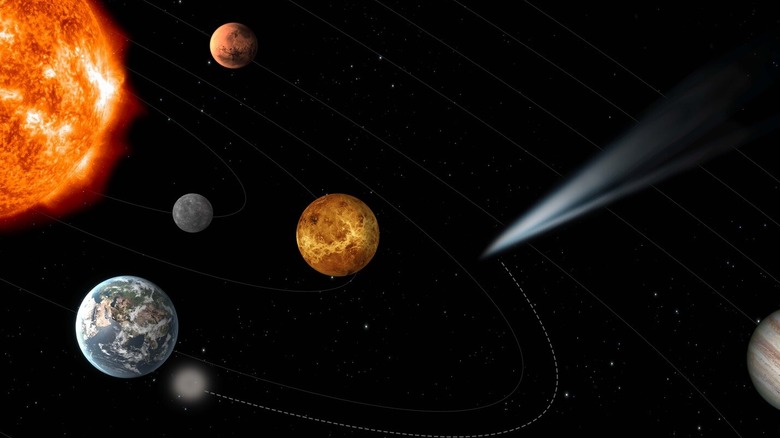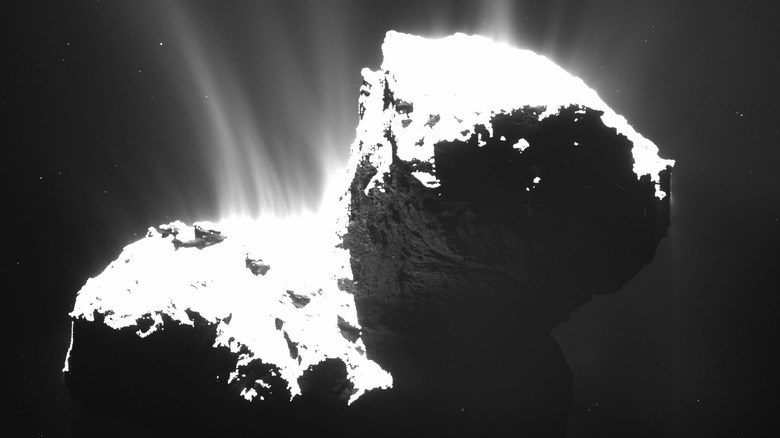Why The European Space Agency Wants To Visit A Comet
How do you learn more about how the solar system was formed? Before Earth even existed, a disk of dust and gas swirled around the sun and gradually clumped to form planets (via ALMA). To learn more about how this happened and to peer back at the earliest stages of our solar system, one great source of information is comets. These chunks of dust and ice orbit the sun, and when they approach the sun they warm up and give off gases in a process that creates a distinctive tail. They are left over from the early stages of the solar system, around 4.6 billion years ago, so studying their composition helps reveal what this period may have been like (via NASA).
The European Space Agency (ESA) wants to further the study of comets by visiting one with a spacecraft. By visiting a "pristine" comet, or one that is just beginning to approach the inner solar system, the agency may be able to see untouched material from this early stage of the solar system. The mission, named Comet Interceptor, completed its study phase and in June 2022, the ESA announced it was looking for a contractor to start building the craft.
"A comet on its first orbit around the sun would contain unprocessed material from the dawn of the Solar System," explained a study scientist for the project, Michael Küppers. "Studying such an object and sampling this material will help us understand not only more about comets but also how the solar system formed and evolved over time."
Plans for Comet Interceptor
The idea for the Comet Interceptor mission is to build a main spacecraft along with two probes, all of which will visit the same target. That way, the comet can be observed from different views in order to build up a 3D picture of it. ESA will work with the Japanese space agency JAXA on the project, with ESA building the main spacecraft and one probe and JAXA building another. JAXA has experience that will be relevant to this kind of task thanks to its ground-breaking mission to visit asteroid Ryugu.
As for which comet the mission will visit, that depends on when a suitable option turns up. Comets don't arrive on a set schedule, so arranging a mission to visit one is different from the highly regimented planning required for visiting a planetary body like Mars, the movements of which are well-known. Ground-based telescopes are spotting comets further out than ever before, but there isn't time between spotting a comet and it arriving to build and launch an entire spacecraft.
In light of that, the plan is to build the Comet Interceptor and launch it into orbit around the sun at the L2 Lagrange point. The spacecraft will hang out in this orbit until a suitable comet is spotted on its way into the solar system, then the Interceptor will head off to meet it. With the plan for the mission laid out, the next step is for ESA to select a contractor to build the craft. The plan is to launch the craft, along with the exoplanet hunter mission Ariel, in 2029.

